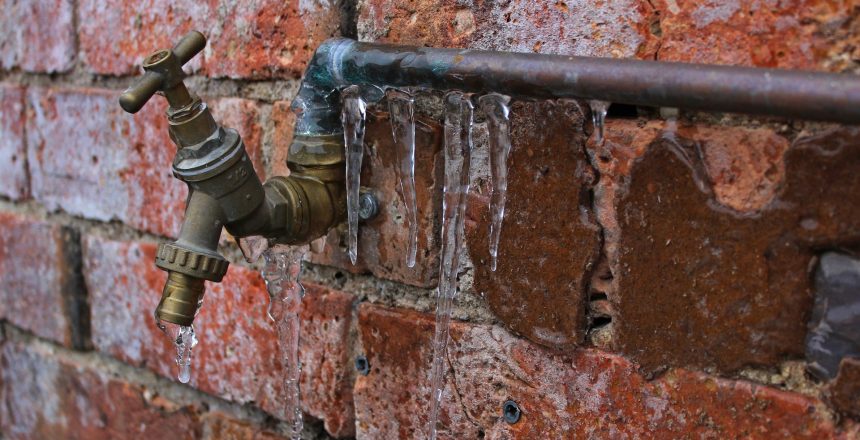Winters in the United Kingdom are undeniably unpredictable, but we can usually expect to experience fierce storms, freezing temperatures and snow on at least a few occasions over these notoriously gloomy months. This can cause some serious problems for buildings and blocks of flats in particular, which are more likely to suffer storm damage due to their height.
Of course, when a building contains multiple leasehold properties, any problems emerging in the communal areas or to the structure of the building as a result of winter weather can have a severe impact on a large number of people. And they will all be looking to the freeholder, who has a legal responsibility to arrange repairs and maintenance to these parts, to rectify the problems immediately.
In some cases, it may be possible to claim on your building’s insurance for damage which results from winter weather, but this will be entirely dependent on your specific insurance policy wording. Nevertheless, it is crucial that you have the appropriate building’s insurance in place and that you carefully read the terms. You and your leaseholders should also be aware that an excess will likely need to be paid for any claims that are made.
If there isn’t an insurance policy in place or the damage is not covered by the policy, the leaseholders will be responsible for paying for the repairs. However, it can take a significant amount of time to arrange any major works to a leasehold property. This is particularly applicable when freeholders need to follow the Section 20 Consultation procedure as a result of leaseholder contributions exceeding the £250 threshold.
This is a legal obligation for freeholders, set out by the Landlord and Tenant Act 1985 and it must be followed regardless of whether there is a sinking fund in place to pay for the works. It, therefore, makes good sense to try to prevent any emergency works by ensuring that the property is well-maintained and can withstand adverse winter weather conditions in advance.
In order to achieve successful outcomes with winter property maintenance, you will need to devise an effective maintenance plan. This will enable you to arrange any major works in good time and make any other preparations for the eight winter maintenance tips for freehold properties below.
- Roof
Falling roof tiles can not only cause serious injuries to anyone in their path but they can also expose the building’s structure to rain and snow. This can result in leaks, severe damage and affect the building’s energy efficiency. It’s therefore imperative to inspect the roof both periodically and after any strong winds to ensure that there are no loose or missing roof tiles and that the structure is stable. You may need to employ a building’s surveyor in order to achieve a competent inspection that will assist you with winter maintenance and preserving the safety and comfort of the building for yourself, the leaseholders and anyone else passing by.
- Heating
It is essential that your leaseholders have a comfortably warm home in the chilly winter months, so in those buildings with a shared heating system, a broken-down boiler will certainly be unwelcome. It’s therefore critical that you keep on top of boiler servicing and arrange for this to take place ahead of the winter months to keep it in top working condition throughout the season. Always use a Gas Safe-registered engineer to service your boiler.
If you have communal radiators in the building, it can be highly beneficial to ‘bleed’ them, which will release any trapped air that can prevent the radiators from heating up and render them inefficient.
- Pipes
As temperatures drop to below freezing, it can cause all sorts of havoc, not least is burst pipes. This happens when water pressure builds up behind a frozen section of the pipe and is more likely to occur with copper pipes than the more modern plastic pipes. Not only can this cause dampness and flooding which can leave leaseholders without water but if the damage is severe enough, it can mean that their home becomes uninhabitable.
The easiest way to prevent this from happening is to insulate any pipes that could be exposed to freezing temperatures such as outside waste pipes and those in roof spaces. Pipes can be insulated using foam insulation or pipe sleeves. It may also help to turn the water flow off to any outdoor taps and run the tap dry before it gets too cold outside. This will ensure that no excess water freezes and damages the pipes. Similarly, if properties are unoccupied during times when it is freezing, it is advisable to drain the system as part of your winter maintenance plan.
- Gutters & drains
With fallen leaves building up throughout autumn and winter, it’s inevitable that gutters and drains will become clogged. This can prevent water from draining away efficiently, causing drains and gutters to overflow and allowing water to escape into the property and damage the walls. Water could even freeze in the guttering and crack the pipes which will result in leaks. Clearing gutters and drains periodically, as opposed to solely for winter maintenance, is the simplest way to defend your property against these issues.
- Garden
Just as leaves can fall into drains and guttering, they can also come to rest on pathways. With wet weather and frosts, these leaves can become slippery and present a greater risk to people walking over them, who may suffer a fall as a consequence. Furthermore, slippery moss is more likely to develop and spread on pathways during the winter so it’s essential that they are kept clear of these hazards for effective winter maintenance. It would also be beneficial to install automatic external lighting to make walkways safer when it is dark and to supply gritting for these areas and any other areas that may become icy.
Similarly, to the roof tiles mentioned in point one, high winds can cause branches or even entire trees to fall and injure people, the building or other property beneath. It is therefore highly advisable to inspect all trees around the property to ensure that they are stable as part of the winter maintenance plan for your property. You may need to employ the services of a tree surgeon if you are unsure about a tree’s health and stability. Also, check that any external doors and gates can shut securely to prevent them from blowing open in strong winds.
- Windows and doors
In order to maintain the security of your building and to prevent the wintery extremities from coming inside, you will need to inspect the communal doors and windows. Wooden doors can expand and contract in different weather conditions which can stop them from providing the same level of protection that they once did. While if any of the windows are old, ill-fitting or draughty, it may be time to consider replacing them. This may involve using the Section 20 Consultation procedure depending on the cost of the works and the number of leaseholders in the building.
- Insulation
One of the best ways to retain heat within a residential building is to ensure that it is suitably insulated. Insulation can be installed in the roof space relatively inexpensively, but you could also consider cavity wall insulation or external insulated cladding. It’s likely that the latter may be costly and require you to follow the Section 20 process, but it will be much better for leaseholder’s energy bills and the environment in the long run.
Another solution is to treat external masonry with silicone waterproofing which will not only stop water from penetrating the walls but will also prevent heat from escaping through latent heat water evaporation.
- Insurance
We touched on having the correct insurance and carefully reading the policy wording earlier on in this article, but it is just so important that we had to make you aware of a few more points. Firstly, it is common for insurance policies to request that any vacant properties are reported to them or it may invalidate your insurance. There is usually a set vacancy timeframe that they must be alerted to, which could be a number of weeks or months. Therefore, you must ask your leaseholders to inform you when they intend to leave their property empty for the timeframe specified in your insurance policy.
Secondly, it is critical that you check your insurance policy is up to date and will cover your building against the most common winter risks such as water leaks, storm and flood damage. Lastly, given the risks outlined above it is imperative that you ensure you have the correct level of third-party liability insurance to protect yourself against any injury or property damage claims from third parties.
Final thoughts
Fortunately, the eight winter maintenance tips for freehold properties that we’ve discussed here are relatively simple to implement. However, some will require advanced planning and you will need to adopt a proactive approach to maintenance tasks during the winter months in order to achieve effective outcomes. Nevertheless, it is advisable that you provide leaseholders with emergency telephone numbers to call should an unexpected problem arise.


